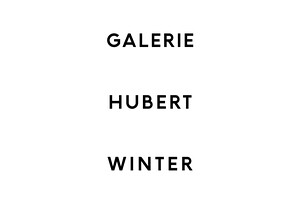Lonely Are All Bridges
June 26–August 28, 2021
Breite Gasse 17
1070 Vienna
Austria
Hours: Tuesday–Friday 11am–6pm,
Saturday 11am–2pm
T +43 1 5240976
office@galeriewinter.at
Curated By Maurizio Cattelan and Marta Papini.
Birgit Jürgenssen and Cinzia Ruggeri have never met—not in this world at least—but they have always spoken. The exhibition that opens a dialogue between them for the first time borrows the title from a line of the poem “The Bridges” by the Austrian poet Ingeborg Bachmann. The riverbank has never been enough for them. Both have gone beyond the geographical boundary of art, exploring other shores and making themselves bridges between the arts.
Their work speaks the same language: that of ornament and accessory as an extension of the body, as means to conquer space and affirm the self. What follows is a transcript of what they said to each other.
Cinzia Ruggeri (C). I love freedom and I hate prejudices, I just wanted to express myself and my ideas in a completely free environment and in different fields and make people smile. See, even tablecloths irritated me because they had to look the same with their symmetrical prints, patterns, and embroideries.
Birgit Jürgenssen (B). I allowed myself the freedom to work in different media, without having to think about how to market and sell my work. If I wanted to draw something specific, I first created it as an object and then if neither of these formats seemed to work, I would take a photograph. It is truly unbelievable that for a long time I found it difficult to show drawings and photographs together in one gallery.
C. Fashion has allowed me to explore the secrets of who wears a garment, needs and desires, manias and personal disorder. I loved this aspect of fashion as the entire point behind my work isn’t to continuously and bulimically create, but to tackle and explore these issues also through behavioural garments.
B. I was looking for a neutral object that everyone was familiar with. Shoes seemed to be the right objects for me to give free rein to my erotic and cynical fantasies and all other possible interpretations too. I began to explore this theme when I was still a student, and it took several years before I started getting annoyed by being called “the woman with the shoes.”
C. Let’s say I hate clichés and codified rules. Who said, for example, that the right shoe should look identical to the left? If a difference in colour or shape can help balance a dress, why not do it? I can’t give small variations. I prefer radical interventions.
B. My interest is not in the representation of things themselves, because they are only intriguing when the relationships they are in come to the fore.
C. Whether we like it or not, clothing is the spectacle (always intentional) of ourselves.
B. Fetishism, the obsessive interest in objects, has always fascinated me. In the photos I took with distorting mirrors in 1979 and 1980, all that we can see is an amorphous impression of shining leather. These pictures are about the object. The identity of the woman is made to disappear, leaving just the fetishized object, the focus of male wishful thinking.
C. If a woman blushes, the dress does not dodge the transformations of the body, it does not remain neutral.
B. Like women and humour, women and irony is still very much a taboo topic. The price for this is not being taken seriously to a large degree. For me, self-irony is a form of autobiographical strategy, a means to more easily convey a subversive and deconstructive potential.
C. Women have fun when wearing something that I designed: the object-dress, perhaps ironic, without too many thoughts and unnecessary involution.
B. I hoped that time would be on my side, and that the conditions for art by women would change. Eventually, the concept of art was redefined, through crossover and the use of new media. Today’s gender discourse consists precisely in addressing concepts like “typically male” versus “typically female” art.
Maurizio Cattelan is an artist and thinks to define is to limit, Marta Papini is a curator and thinks there is nothing so stable as change.


